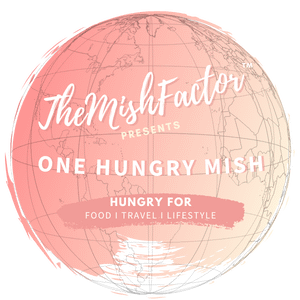Mochi is an interesting snack/dessert. Let’s face it. It’s history runs thousands of years back. Yet it doesn’t feel that antiquated. For the most part, there’s a nostalgia there that seems to be separate of that. In an era with such interconnectedness, it is seen as a homey comfort snack for some. For others, it’s a novelty, an entryway to a world of desserts that are a delicate balance of sweet, chewy, and occasionally cold (I see you ice cream mochi!).
As mentioned in the Trader Joe’s Mochi Cake is secretly Bibingka post, mochi has a varied relationship with people. Like I’ve mentioned in the past, I’ve known people who have had to eat it so often that the charm is forever lost. And there are those who cannot get enough of this squishy, glutinous rice based food. As a side note, glutinous rice does not have gluten in it–glutinous refers to the stickiness of the rice rather than any implied gluten content.
Mochi goes back thousands of years. Reports are early as the Jomon Period in Japan reference it, as well as accounts of samurai eating them in the Heian Period. If interested in a deeper dive of this treat’s history, I know I cannot do it justice (especially as my current food deep dive is a book on garlic) so feel free to read more one Food in Japan!

To Fill or Not to Fill?
Many who have experienced mochi for the first time would likely assume this is always a filled treat, however…it’s not! Filled mochi tends to the more popular, sweeter side of things. Unfilled is the more traditional, likely food of my old boss’ days. As a more neutral item, it’s more versatile to add into meals or treat similar to Korean tteok.
So what do people fill it with?
Red bean paste is a timeless option–if you’re near a Japanese market can buy canned, if not soak beans and boil in syrupy water until desired taste/texture when mashed, this will take time so be patient! Ice cream (lactose free other otherwise), for those looking for a popular modern take. Fruit, another classic mix. Jams, cheesecakes, cookies–really one could fill it with anything that goes with the bouncy, subtle rice treat.

Mochi Master Ratio
2:1 rice/water to sugar by volume
1:1 rice flour to water by volume
Or 2:2:1 rice flour to water to sugar by volume
Flavoring/colorant is a small amount depending on preference of result and item used, i.e. a pinch in comparison to the main ingredients (I have used 1/2 tsp matcha powder for a 1/2 cup flour master ratio with positive results)
Mochi Recipe
Ingredients
- 1 Cup mochiko/sweet rice flour
- 1 Cup water
- 1/2 Cup white sugar
- Potato/Corn/Tapioca starch
- 1/2 tsp flavoring, ex. matcha powder, butterfly peaflower powder, ube flavoring Optional
- Filling of choice, ex. red bean paste, ice cream Optional
Steps
- Mix all ingredients except filling, if using, in microwave proof container.
- If adding a powder colorant/flavoring into mochi (ex. matcha) sift into container. Make sure not clumps or “fish eyes” are present. See notes if steaming.
- Cover container loosely and microwave for a minutes. Stir.
- Microwave for 30 second or 1 minute increments and stir until mochi mix develops translucency.
- Starch surface and turn out mochi onto surface. Let cool for about 20 minutes.
- Sprinkle starch on top of mochi and rolling pin, roll out.
- If filling cut into smaller balls to roll flat.
- Place filling in center of flattened mochi, pinching, if filling with ice cream refreeze ice cream after portioning out but before wrapping mochi around the filling.
- If not immediately consuming, sprinkled extra starch (it will absorb some starch), place in container and freeze or stick in fridge.
Notes
-If steaming, cover heat safe bowl loosely and place in a pot with a shallow amount of water, let steam for 15 minutes
-When in doubt, over starch the mochi and surface, sticky mochi on a rolling pin is hard to recover from
-Mochi scraps can be pressed back together and rerolled to fill or enjoy as unfilled mochi
Stay Hungry
XOXO
Mish ❤

